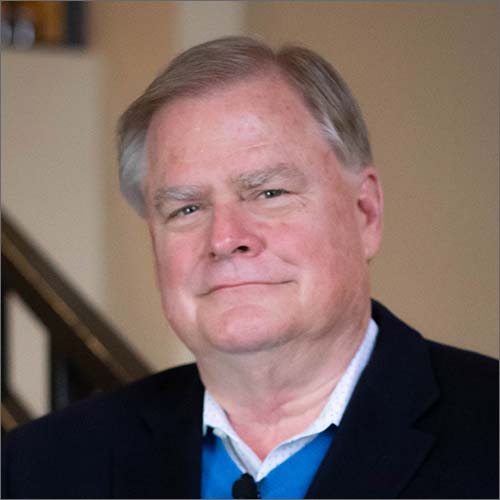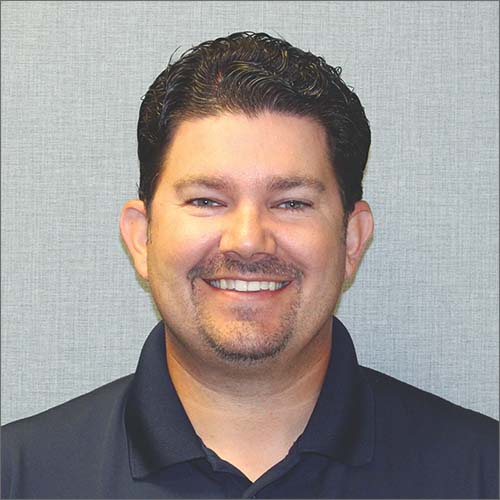Between new federal energy-efficiency requirements, the opportunity to leverage billions in consumer incentives, and market challenges like a still-lagging supply chain, continuing inflation, and decreasing demand in some segments, the HVACR industry is in a state of flux, and distributors are in the thick of it.
Distribution Trends recently asked executives at four distribution companies, each in a different part of the country, to reflect on their 2022 business experiences and look at what might lie ahead in HVACR for this year. Although their experiences varied somewhat, depending on their markets, there were also many intersections, especially when they spoke about inflation, industry regulations, and the prospect of — or maybe the fact of — a slowing economy.
Participating in this year's Distributors Roundtable were John Steele, vice president of sales and marketing at CFM Equipment Distributors Inc. in Sacramento; Richard Cook, president and chief operating officer of Houston-based Johnson Supply; Stan Allen, president of Baltimore's Northeastern Supply Co.; and John Dugan, CEO of Liberty Supply in Minneapolis. We connected by email, and here, lightly edited, is what they had to say.

Stan Allen

Richard Cook

John Dugan

John Steele
Tell us how the year 2022 went for your business: Was there continued high demand for product? Did issues like inflation, supply-chain problems, and labor shortages get resolved or mitigated? What new market challenges, things outside of your immediate control, arose?
Steele: 2022 was a good year for our business. Demand was high, despite significant supply-chain problems and inflation problems, which have continued into 2023.
We have seen 70% in announced price increases on average from vendors since January 2020. We still have a significant amount of orders waiting on manufacturers, with orders placed back in late 2021 still awaiting delivery. However, we noticed that the actual growth on units was significantly smaller than what our growth percentages (in dollars) showed.
Allen: 2022 was a strong growth year for Northeastern Supply. The business started to soften around September. The RNC (residential new construction) is the segment that slowed.
Supply-chain issues have eased, with more predictability on lead times. Labor continues to be a challenge, but we seem to find the people to fill our open positions.
Cook: Our fiscal year doesn’t end until March 31, 2023, but the first nine months were record months for sales, profits, inventory, and expenses. There was continued high demand for product, with inflation continuing to be a significant issue.
Supply-chain problems continued to be disruptive, although in December 2022 we started to see some “old” (orders) shipped to us, possibly an effort by manufacturers to “make” the year, or maybe an indication that supply chain is improving. Commercial equipment continues to be our biggest problem in supply chain.
Labor shortages are still a problem, despite significant increases in pay rates (particularly for hourly people). Obviously, interest rates are outside our control, and have added significant expense — particularly when coupled with very high inventory levels.
Dugan: 2022 was a year of growth for Liberty Supply. Inflation, supply chain, and other macroeconomic problems presented opportunities.
We refactored the prioritization of company initiatives. Systems integration and process automation took a front seat. Labor efficiency was placed on an equal plane with growth.
Good business people are always learning. What lesson or lessons did you learn from doing business in 2022 that you plan to apply to running the business going forward?
Steele: The biggest lesson we learned in 2022 was that if our vendors are not committed partners, we do not want them. Without healthy communication and support, we would not have succeeded in 2022. It has forced us to part ways with some vendors and solidify our partnerships.
Allen: We learned to recognize our accounts receivables to get in front of the slowdown in business. If accounts are paying slow when it is busy, then you probably are going to have problems when business slows down.
We learned the allocations and lead times caught up without notice and inflated our inventory. Now we have to burn off inventory. Lesson learned!
Cook: Reinforced the value of collaborative business processes with vendors and customers. Reinforced the value of working in the “office” as opposed to from home or Zoom. The many substitutions we had to provide during the supply-chain disruptions reinforced the value of our company brand as opposed to a manufacturer’s brand.
Dugan: Truth hides in plain sight. Nearly every customer inquiry begins with the same phrase: I need price and availability. The word “need” is used. Following that, the hierarchy of concerns is communicated: “price” and “availability.”
While addressing the concerns involves complex systems, variables, and externalities, the concerns themselves are very clear.
Many business pundits continue to talk about a recession, saying either that there's one ahead or that we're in one now. What do you see ahead in 2023 for the HVAC industry and especially for the distribution segment?
Steele: 2023 will bring its own issues. We are anticipating a noticeable slowdown, along with price pressures.
I do not see growth on the horizon for the industry, which will force distributors to find new business from their competition or lose market share.
Allen: We are definitely in a slowdown and we are already in a so-called recession.
I believe the add-on replacement business will be back to a normal demand. We just experienced a replacement cycle and the demand will not keep this pace.
The first half of 2023 will be challenging, and we will have to stay aggressive in the marketplace to meet our goals. I think business will start to improve in the second half of the year.
Cook: Tailwinds: Strong residential demand due to regulations, phaseout of refrigerants, migration into Texas, good business environment by local government, aggressive new business expertise.
Headwinds: Commercial equipment availability, high inventory levels/expenses, increased expenses being passed along to customers, slowing growth.
Do not see a classical recession in 2023 — (but) slowing growth is already evident.
Dugan: The current problems are obvious. Problems ahead need to be contextualized on a relative basis. Like any system, markets are a product of stocks and flows.
When we last spoke in March of 2022, I expressed concerns over the Fed’s (Federal Reserve) limited options. I said they would have to raise rates. At the time, the Fed fund’s 30-day average rate was 0.05%. At present (January 2023), it is 4.3%.
From this standpoint, I believe most of the pain is over. We need to look forward as we adjust for current conditions.
The industry is facing regulatory changes on many fronts, including, this year, the new Department of Energy efficiency standards for certain equipment and, next year, the beginning of the phasedown of hydrofluorocarbon (HFC) refrigerants. Some state and local jurisdictions are taking steps to phase out or deemphasize fossil fuel-burning appliances. How have these kinds of regulations affected your business, and how well prepared is the HVAC industry for the current wave of change?
Steele: We are in California and have been effected by these regulations for years. We have already seen the rollout of “ultra-low NOx” requirements that have forced most contractors to look at electric solutions due to the increased cost, reduced offerings, and problematic equipment. We have seen a significant reduction of our furnace portfolio, and we anticipate more.
I do not believe our industry is well prepared for the coming changes, and, unfortunately, the state infrastructure is even more ill prepared for the coming changes.
Allen: The regulations have not affected our business yet since they went into effect in 2023.
The inventory issue has been the issue. The government did not give the industry (markets) a chance to sell off the 14 SEER units in time before the new regulations took effect.
Cook: These regulations have had a dramatic impact on our business. We have had to absorb some losses because of being unable to sell through all of our legacy residential condensing unit business. This changeover required a lot of management time, expense (i.e., incentives and double inventory), and stranded inventory.
The regulations around commercial equipment efficiency significantly disrupted manufacturing and are leading to shortages of commercial equipment, at least through first half of year — huge lost opportunity for distributors. Lots of unnecessary friction on business process.
The Inflation Reduction Act included new and enhanced incentives designed to promote electrification and the purchase of higher-efficiency products. Will these incentives help the HVAC industry in the next couple of years and, pros and cons considered, are the incentives good for the country or not?
Steele: I do believe that the enhanced incentives will help the HVAC industry. Ultimately the government will find ways to spend our tax dollars, so why not have it benefit our industry?
I do not anticipate that the number of units will increase, but we will see a shift on efficiencies and, most importantly, better technologies, like inverter, which is the right direction for our industry.
Allen: It is too early to tell how the Inflation Reduction Act will impact the HVAC industry. I have concerns about the push for electrification and potentially having once source for our energy. Being sole-sourced is a slippery slope!
Cook: From my perspective, the IRA was pure political theater with little consideration given to ramifications around the electrical grid, the energy used to generate electricity, the total cost of a kW (kilowatt) of electricity.
I think the incentives will help sell higher-efficiency equipment — which is good for our country and electrical grid.
One of the reasons people dislike politicians is the misnamed IRA did not do anything to reduce inflation, assumes people are not intelligent enough to get past the soundbite, and reinforces cynicism about the political ethics.
Dugan: I cannot comment on how it will impact the HVAC industry.
From a moral standpoint, we are obligated to keep a clean planet. From an operational standpoint, we focus on what we understand and can control.
We want to hear about the good stuff at your business too: challenges overcome, company growth earned, connections made, your impact on the community. Share some of the positives that came out of your business in 2022.
Steele: 2022 was an exclamation point on the investments in our people, infrastructure, and customers we have been making in our business over the last eight years.
We were very fortunate to experience well over 30% growth in 2022, we have tripled our business in the last eight years, and, most importantly, our customers have experienced significant growth.
Our team has done an excellent job in communicating the upcoming changes well in advance, so our contractors were best prepared to navigate the changes, and they have used them to lead in their markets.
Allen: We continue to focus on growth. We continue to grow organically, acquisitively and (by) opening green fields. We opened two new locations and acquired one in 2022.
Our e-commerce is making a huge impact since inception in April of 2020. We donated our downtown Baltimore location to the local church adjacent to our business. We ramped up our Touch program (customer events) and relationship-building that was shut down in the thick of the pandemic.
Cook: Positives included very good financial performance, helping our people improve problem-solving skills, a record year in new business (in some part due to dissatisfaction with lower-performing distributors), acquiring some talented people (again, due to dissatisfaction with lower-performing distributors), and emphasizing the importance of distribution to many of our manufacturers.
Dugan: Liberty Supply quadrupled sales in 2022. No words can express the gratitude we feel for every individual and organization that gave us a shot.
Caring more has been a competitive advantage. We’ll continue to let our actions speak.


Report Abusive Comment